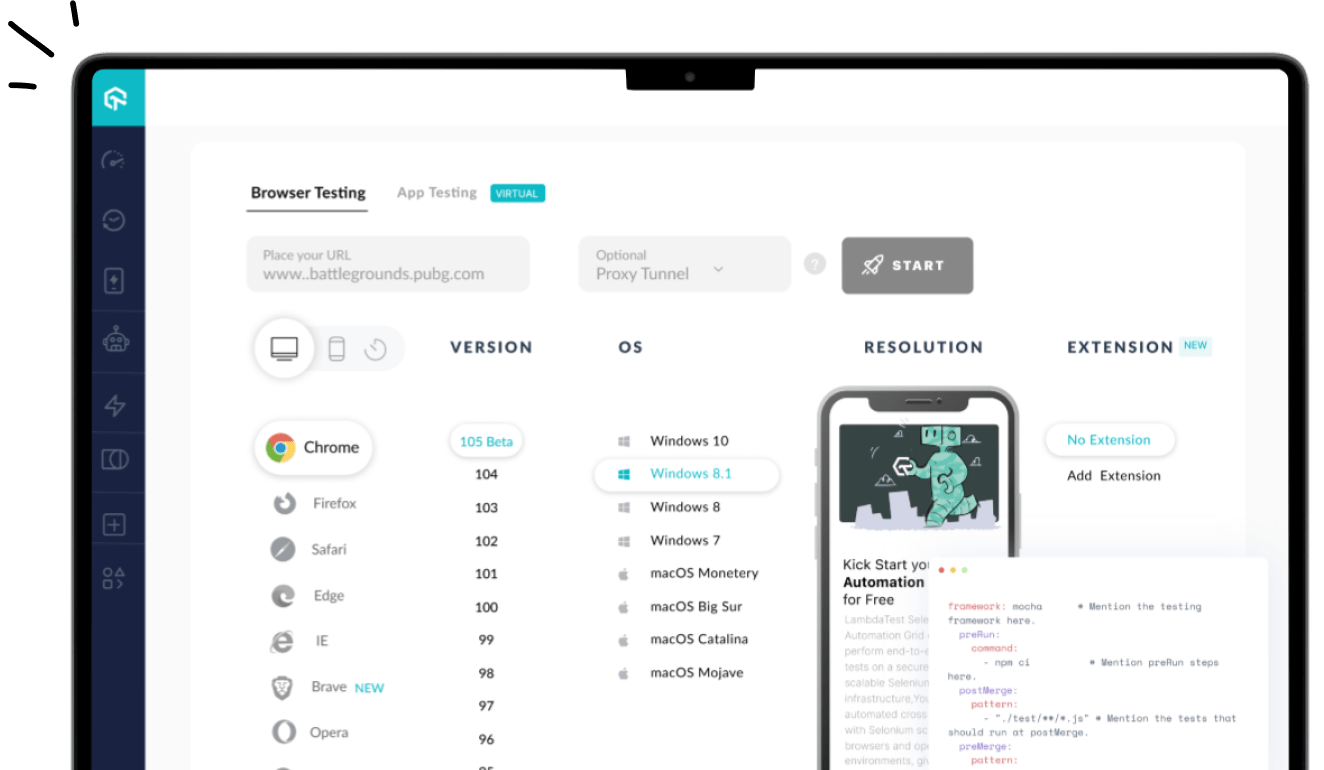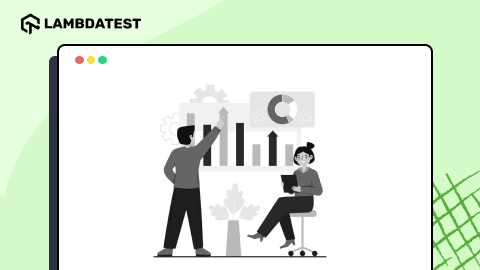Ethics in QA: The Fine Line Between Innovation and Responsibility
Farzana Gowadia
Posted On: April 16, 2025
![]() 34989 Views
34989 Views
![]() 8 Min Read
8 Min Read
The conventional wisdom in software development has long been “move fast and break things.”
We prioritized speed and innovation above all else, with quality assurance often relegated to a final checkbox before release.
But this approach ignores a critical reality: in today’s interconnected world, software failures don’t just inconvenience users—they can compromise privacy, reinforce bias, and even endanger lives. These risks are further amplified with AI systems, where failures can scale rapidly and affect thousands or millions of users simultaneously.
Recent data from the Consortium for Information & Software Quality reveals that poor software quality cost the US economy approximately $2.41 trillion in 2022 alone. This causes real harm to individuals and organizations caused by ethical lapses in quality processes.
I don’t think QA is just a technical checkpoint anymore but should be the moral backbone of software development. The transformation we as QA professionals need to make is now about recognizing that true innovation can only be sustainable when built on a foundation of ethical responsibility.
The Ethics Gap in QA Practices
My analysis of testing practices across companies I worked in was quite in line with research published in the Journal of Software Quality. It revealed three patterns which were previously unrecognized in conventional QA approaches.
- The disconnect between ethics and innovation: While 78% of organizations claimed to prioritize ethical considerations in their products, only 31% had formal ethical frameworks integrated into their QA processes. This disconnect suggests that ethical considerations remain abstract concepts rather than concrete testing criteria. For AI applications specifically, this gap is even more concerning as many organizations lack dedicated testing protocols for algorithmic bias or decision transparency.
- Who’s responsible: When examining test case repositories, we discovered that security and privacy scenarios accounted for less than 15% of test coverage in most organizations, despite these areas representing over 60% of the most damaging software failures. AI systems often introduce additional testing complexities around data privacy that remain inadequately addressed.
- The pressure paradox: In-depth interviews with QA professionals revealed that 67% had felt pressured to approve releases despite unresolved ethical concerns, with pressure increasing proportionally with market competitiveness.
The research above shows a critical disparity between what organizations think about ethical QA and the processes they actually implement.
So, while executives speak a lot about responsibility, the QA teams don’t have the right frameworks, the right authority and the right resources to transform the ideologies and the principles into testing practices and their daily workflows.
The Daily Reality of Ethics in QA
Now, I have observed the gap between theoretical understanding of ethics and practical application.
And it becomes even more evident when you talk to QA professionals across industries. You will constantly hear that they are balancing between focusing on thorough testing and meeting their sprint deadlines.
And the pressure to release features faster, due to the speed at which software is progressing, makes it even harder for them to focus on quality and they are more willing to accept a “good enough” test outcome. With AI-native features, this pressure is compounded by the additional complexity of testing machine learning models that may behave unpredictably in production environments.
Here is the daily reality of QA teams which strategy documents rarely talk about.
- Implicit pressure to avoid being the “blocker” that delays releases
- Limited access to diverse testing environments that would reveal bias
- Insufficient authority to halt releases when ethical concerns are identified
- Ambiguity about who “owns” ethical considerations in the development process
These are some of the challenges why Ethical QA is often an aspirational thing for companies rather than something that they have put into practice.
The structure and incentives just don’t align with the stated values and outcomes.
So how do you change that?
Use The Ethics Ecosystem
Ethical quality assurance doesn’t exist in isolation. It’s intimately connected to organizational culture, governance structures, development methodologies, and even business models.
A systems perspective reveals why isolated ethical initiatives often fail to create lasting change.
When examining ethical testing failures, I’ve found that attempting to solve quality control issues without addressing related systems creates unintended consequences:
- Organizations that implement ethical training without changing incentive structures still produce the same ethical lapses
- Teams that adopt ethical review processes but maintain the same deadline pressures simply create parallel “shadow” approval pathways
- Companies that implement ethical guidelines without enforcement mechanisms see minimal behavior change
- AI systems developed without comprehensive ethical testing frameworks amplify existing biases at scale
I believe the most effective intervention point isn’t where most resources are currently focused (individual tester awareness) but rather at the intersection of governance, incentives, and technical infrastructure. This interconnected view explains why ethical QA requires a holistic approach rather than point solutions.
The ripple effects of ethical QA decisions extend far beyond the application itself.
The Early Ethical Quality Assurance Approach
Unlike conventional approaches which treat ethics as a separate consideration, layered into existing QA processes, I use a framework that reconceptualizes quality with three interconnected dimensions.
- Principled testing: Integrating ethical principles (fairness, transparency, privacy, and safety) directly into test design rather than treating them as special cases.
- Institutional courage: Creating organizational structures that empower QA professionals to raise and address ethical concerns without fear of repercussions.
- Systemic verification: Moving beyond feature-level testing to evaluate how systems behave in complex environments and with diverse user populations.
This framework brings to light previously invisible connections between technical testing practices and organizational ethics. This approach has helped me prioritize early detection of ethical issues by integrating ethics into the definition phase of testing, rather than treating it as a separate checkpoint.
This shift fundamentally changes how organizations approach quality by making ethical considerations as routine as functional testing.
Implementation Path & Practical Application
There are different ways you can implement ethics in QA and that depends on how far your application is.
So here are three different paths to implementation.
Entry-Level Application
Enhance existing test case templates to include explicit ethical considerations. For each feature under test, add questions like:
- How might this feature inadvertently exclude certain user groups?
- What privacy implications might emerge from this functionality?
- Could this feature be misused in ways that cause harm?
- Are algorithmic decisions transparent and explainable?
- For AI features: Does the system perform equitably across different demographic groups?
This simple addition creates awareness and begins building an ethics vocabulary within the testing team. Start with high-risk features where ethical lapses would have the greatest impact.
Intermediate Integration
As you gain comfort with the basic approach, expand to include:
- Ethics-focused test data: Create diverse, representative test data sets that better reflect real-world user populations
- Ethical testing metrics: Develop KPIs that measure ethical quality alongside traditional metrics
- Cross-functional ethical reviews: Implement ethics-focused reviews that bring together QA, development, and business stakeholders
At this stage, watch for resistance related to timeline impacts. Address this by emphasizing how early ethical testing reduces costly late-stage issues and potential reputation damage.
Advanced Adoption <?h2>
Full integration becomes possible when you address the interconnection between testing practices and organizational values:
- Ethics champions program: Designate and train ethical QA champions who advocate for and support ethics integration across teams
- Governance structures: Implement ethics review boards for high-risk projects with authority to influence release decisions
- Incentive alignment: Modify team rewards and recognition to value ethical quality equally with speed and feature delivery
- Supply chain responsibility: Extend ethical testing requirements to third-party and open-source components
The most challenging obstacle at this stage is sustaining commitment when business pressures intensify. Counteract this by documenting avoided incidents and quantifying the business value of ethical quality.
Future Implications: The Evolution of Ethical QA
As AI adoption and algorithmic decision-making accelerate, I firmly believe ethical QA will become increasingly central to business success. Organizations that master the approach of adopting early ethics in QA will see three capabilities over the implementation:
- Ethical resilience: The ability to anticipate and address ethical concerns before they become crises
- Inclusive innovation: The capacity to create products that work for diverse user populations from the outset
- Trust leadership: The reputation advantage that comes from consistently delivering ethical quality
As regulatory frameworks like the EU AI Act, GDPR, and digital accessibility requirements continue to expand, organizations that have mature ethical QA practices will find it easier to navigate these requirements than those who have been retrofitting ethics onto existing processes.
Going from From Just Another Checkbox to Cornerstone Approach
I strongly believe that moving from treating ethics as a compliance checkbox to positioning it as the cornerstone of quality requires a fundamentally different understanding of what QA’s role should be in modern organizations.
Rather than being the last line of defense, ethical QA becomes the foundation upon which successful innovation is built.
Here are the action steps I recommend to try this new approach:
- Audit your current test cases for ethical considerations and identify gaps
- Create an ethical testing “pilot” for your highest-risk feature or product
- Document ethical concerns identified in testing with the same rigor as functional bugs
- Begin building cross-functional partnerships between QA and ethics/compliance teams
As more organizations adopt this approach, I believe we collectively gain not just better software but a more thoughtful technology ecosystem that advances human welfare rather than compromising it.
Got Questions? Drop them on LambdaTest Community. Visit now














